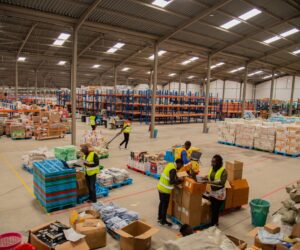E-commerce giant Jumia is weighing a return to expansion, with Tanzania and Angola emerging as potential new markets just a year after it exited South Africa and Tunisia to stem losses and tighten operations, according to its investor day presentation on November 13, 2025.
The move signals a shift from the consolidation of its resources to a few markets to selective growth as the company leans on efficiency, automation, and a maturing logistics network to push toward profitability, which it aims to achieve in 2027.
In 2024, Jumia exited South Africa and Tunisia, markets that accounted for only 3.5% and 2.7% of its total orders, to focus on its other nine markets as it sought to accelerate overall growth and improve efficiency. According to the company, both markets’ competitive and macroeconomic conditions were limiting their growth potential.
One year later, Jumia told investors that part of its long-term options to underpin future growth involves expansion plans into Angola and Tanzania (a market it left in 2019 to focus its resources elsewhere).
This move is part of its long-term growth options, which also involve offering its logistics network to third parties in what it says is an over $50 billion market. Among other things, Jumia believes this will help it monetise existing networks while increasing coverage.
After years of loss-making, the e-commerce giant has been on an efficiency path. In its Q3 2025 results, Jumia reduced its workforce by 7% since December 31, 2024, as it increased AI-driven automation. Its revenue rose 25.28% to $45.6 million in Q3 2025, as operating loss fell 13.43% to $17.4 million.
Why Tanzania and Angola?
Population and GDP are a big part of why Jumia is considering these two markets. In its presentation deck, it noted that Tanzania has a population of 69 million and a GDP of $79 billion, and Angola has a population of 38 million and a GDP of $108 billion.
However, it won’t enter these markets until certain “gates” are met. These include FX stability, partner density thresholds, seller pipeline, readiness, payback within internal thresholds, and sufficient cash.
In 2019, Jumia shut down its Tanzanian e-commerce website, Jumia.tz. At the time, it told TechCabal that its Tanzanian exit was “part of ongoing portfolio optimisation efforts.”
Over the last ten years, Tanzania’s GDP has averaged 5.5%, making it one of the world’s fastest-growing economies. It is expected to grow by 6% in 2025, supported by public investments and reforms to improve the business environment, which might explain its new attraction to Jumia.
While some media reports claim Jumia launched in Angola in 2015, the country is not among its nine active markets today
The country delivered its strongest growth in five years in 2024, with real GDP expanding by 4.4%, thanks to reforms and renewed activity outside the oil sector.
Growth in 2025–2026 is projected to lag behind its 3% population growth. High inflation, which has eroded households’ wages and poverty levels at around 31.1%, could complicate Jumia’s timing.
Beyond expansions, Jumia said its existing nine markets remain underpenetrated. “Our Countries are still massively underpenetrated, providing a long runway for growth,” it said.
There is no timeline for the Tanzania or Angola expansion. But Jumia insists it now has strong confidence in its path to profitability and its “longer-term trajectory.”








